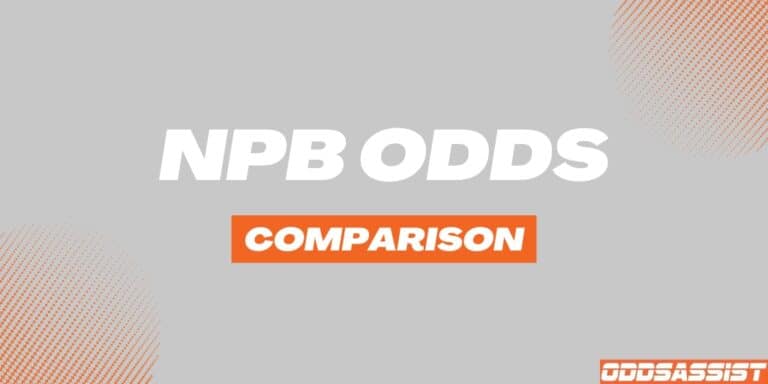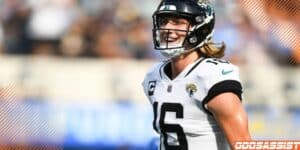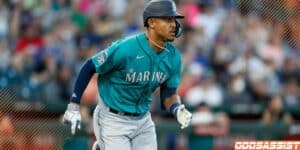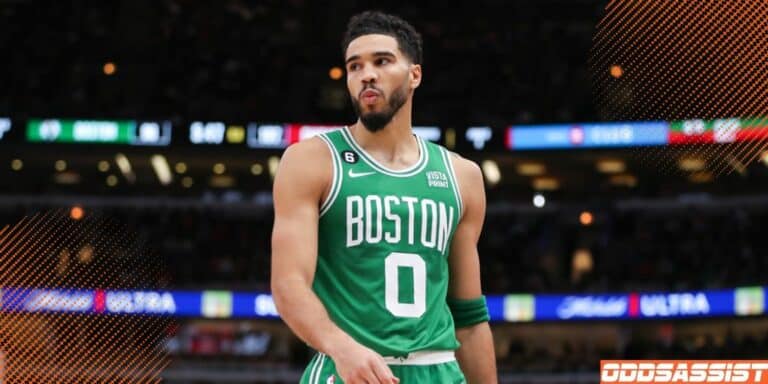Companies featured on this page may be our partners who compensate us if you sign up for one through our links. This doesn't affect our ratings or opinions in any way. Must be 21+. Gambling Problem? Call 1-800-GAMBLER. See full disclosure.
Every major sportsbook in the U.S. offers NFL lines for all kinds of bets, so there’s plenty of action to jump into.
Before making your move, you must learn how different NFL bets work. This knowledge lets you navigate different betting angles, turn your instincts into well-informed bets, and optimize your potential returns.
You also need to grasp how to read NFL odds. Think of it as learning to walk before you run. Without this foundation, you'd be taking shots in the dark and probably will have a tough time turning a profit.
We’ll help you learn the ropes and set you up to make informed and smart plays.
This guide will unpack the three primary NFL odds formats, show you how to read NFL betting lines, explain how to calculate payouts, and everything else you need to know.
Three Different Types of NFL Betting Odds
Betting odds are the backbone of sports wagering. They provide insight into the payout of a bet relative to the amount staked.
U.S. sportsbooks typically offer three betting formats, allowing bettors to switch between them as they see fit.
Here's a brief overview of the three primary types of betting odds:
- American Odds: Displayed with a plus (+) or minus (-) sign. For an NFL game between the Eagles and the Chiefs, Eagles at +150 means a $100 bet could win you $150. Conversely, Chiefs at -150 indicates you need to bet $150 to win $100.
- Fractional Odds: Expressed as fractions. Eagles at 3/2 suggest that a $100 bet could net you $150. Chiefs at 2/3 implies a $150 bet could earn you $100.
- Decimal Odds: These odds show the total payout rather than just the profit. Eagles at 2.50 means a $100 bet would return $250 (including your stake). Chiefs at 1.67 indicates a $150 bet would return $250.50.
Below is a table illustrating potential payouts for a given stake across the three odds formats:
Odds Format | $100 to Win $150 | $150 to win $100 |
|---|---|---|
American | +150 | -150 |
Fractional | 3/2 | 2/3 |
Decimal | 2.50 | 1.67 |
For a deeper dive into your betting calculations, check out these resources:
- Odds to Probability Calculator to understand the implied probability of given odds.
- Betting Payout Calculator to determine potential payouts based on your stake and odds.
- Odds Conversion Calculator to switch between various odds formats without having to do the math.
Why Learning How to Read NFL Odds Matters
Knowing how to read NFL odds goes beyond just determining potential payouts. It's about unlocking a deeper acumen of the game's dynamics.
By knowing how to read betting odds, you tap into the sportsbook's perspective on the likelihood of an event. This insight—termed implied probability—reveals the sportsbook’s estimation of an event's likelihood, such as the Bills clinching a win. By contrasting this with your own game analysis, you can pinpoint where the odds might be in your favor.
Interestingly, when you add up the implied probabilities for both sides of a bet, the total often exceeds 100%. This isn't a mathematical anomaly but rather the sportsbook's built-in safety net, known as the “juice” or “vig.” This slight adjustment ensures that the house always has an edge, guaranteeing them a profit over time.
By recognizing this, you can better assess the value in a betting line and make wagers that align with both your insights and the bookmaker's projections.
In essence, it's not just about predicting the game's outcome but also about maximizing the efficiency of every dollar you wager.
How to Read NFL Betting Odds in an American Format
The American format is the go-to choice for most U.S. bettors and is typically the default setting on U.S.-based sportsbooks.
Central to this format is the use of “+” and “-” signs. These symbols not only help identify underdogs and favorites but also indicate the spread. Given their dual purpose, a deeper dive into their meaning is essential.
Interpreting the + and – in NFL Betting
In sports betting, the “+” and “–” signs serve as quick indicators. A “+” sign before a number signifies an underdog and shows how much profit you'd make on a $100 bet. Conversely, a “–” sign indicates a favorite and reveals how much you need to wager to earn a $100 profit.
In a hypothetical matchup between the Eagles and the Bills, let's say the Eagles are favorites with odds at -200, while the Bills are the underdogs at +150.
When you see the Eagles at -200, it means they're the favorites. To put it in practical terms, you'd need to bet $200 on the Eagles to potentially earn a $100 profit.
On the other side, the Bills at +150 indicate they're the underdogs. In this scenario, a bet of $100 on the Bills could net you a $150 profit if they pull off the upset.
Putting it All to Practice with the Big 3 Wagers
Understanding American odds becomes clearer when we see them in action with the three most common wager types in NFL betting: moneylines, spreads, and totals.
- Moneyline: This is a straightforward bet on who will win the game. For instance, if the Patriots are favorites with odds at -130, it means you'd need to bet $130 to profit $100. On the other hand, if the underdog Jets are listed at +150, a bet of $100 could bring you a $150 profit if they win.
- Spreads: If you've ever wondered how to read a football spread, it's all about the margin of victory. Let's say the Seahawks are playing the 49ers, and the Seahawks are favored with a spread of -6.5 at odds of -110. This means they'd need to win by 7 points or more for the bet to cash. If you bet $110 on this spread, you stand to win $100.
- Totals: Often referred to as the over/under, this bet is about the combined score of both teams. For a matchup like Packers vs. Lions with a total set at 47.5 and odds at -110, you're betting on whether the combined score will be over or under that threshold. A wager of $110 would win you $100 if your prediction is correct.
Calculating Your NFL Winnings in American Odds
While our earlier examples revolved around the standard $100 stake, real-world betting often involves different amounts. When you're not wagering in those neat $100 increments, determining your potential payout can get a bit complex.
Here's a breakdown to help you navigate these waters:
- Betting on an Underdog (+ sign): To figure out your potential winnings, multiply the amount you wagered by the odds (after shifting the decimal two places to the left). For instance, for odds of +150, think of it as 1.50. If you bet $120, your potential profit would be $120 x 1.50 = $180.
- Betting on a Favorite (– sign): Here, divide your bet amount by the odds (again, after shifting the decimal two places to the left). So, for odds of -130, consider it as 1.30. If you bet $130, you'd stand to win $130 / 1.30 = $100.
Calculating Implied Probability from American Odds
Implied probability offers a window into the sportsbook's perspective on the odds of an event happening.
- Underdog Implied Probability: For underdogs, the formula involves dividing 100 by the sum of the odds and 100. This percentage reflects the bookmakers' estimation of the underdog's winning chances.
- Favorite Implied Probability: When dealing with favorites, you'll divide the absolute odds value (without the negative sign) by the sum of that number and 100. This gives you the bookmakers' perceived probability of the favorite winning.
Now, when you crunch the numbers for standard -110 bets, the implied probability stands at 52.38%. This means that to merely break even, you'd need to win 52.38% of your bets.
This over-100% total probability, which might seem counterintuitive at first, is due to the sportsbook's margin or “juice.” It's their way of ensuring profitability. This margin emphasizes the challenge of achieving consistent success in sports betting and highlights the importance of strategic betting.
How to Read NFL Betting Odds in a Fractional Format
Fractional odds, often referred to as “British odds,” are predominantly used in the U.K. and Ireland. They're presented as fractions, such as 5/1 or 10/3.
The denominator shows the stake, while the numerator shows the potential payout for that stake.
For instance, let’s say the Chiefs are playing the Bills. The Chiefs are a 1/5 favorites while the Bills are the 5/1 underdogs. Here are the potential payouts
- a 5/1 bet means for every $1 you wager on the Bills, you stand to win $5.
- A 1/5 bet means for every $5 you wager on the Chiefs, you stand to win $1.
Calculating Your NFL Winnings in Fractional Odds
When you're dealing with fractional odds, determining potential profit is straightforward. You simply multiply your wager by the fraction.
Piggybacking on the example above, if you bet $20 on the Bills with 5/1 odds, your potential profit would be $20 x 5 = $100.
Calculating Implied Probability from Fractional Odds
With fractional odds, you calculate the implied probability by dividing the denominator (bottom number) of the fraction by the sum of both the numerator (top number) and the denominator.
Going back to the example above, with odds of 5/1, the implied probability for the Bills to win against the Chiefs would be calculated as 1 / (5 + 1) = 1/6 or 16.67%.
How to Read NFL Betting Odds in a Decimal Format
Decimal odds—commonly used in mainland Europe, Canada, Australia, New Zealand, and a few other regions—are arguably the most straightforward format to understand.
They represent the total return from a bet, including the stake.
Let's consider a hypothetical NFL matchup between the Ravens and the Bengals. If the Ravens have odds of 1.50, it means for every $1 you wager on them, you'll receive $1.50 in total if they win—that's 50 cents in profit plus your original $1 stake.
Calculating Your NFL Winnings in Decimal Odds
To determine your potential payout with decimal odds, you simply multiply the decimal number by the stake. Using our Ravens vs. Bengals example, if you decide to back the Ravens with a $20 bet at odds of 1.50, your potential payout is straightforward: $20 x 1.50 = $30. This sum includes your $10 profit and the original $20 stake.
Calculating Implied Probability from Decimal Odds
To determine the implied probability from the decimal odds, you use the formula of 1 divided by the odds. For the Ravens' odds of 1.50, the calculation becomes 1 / 1.50 = 0.6667 or 66.67%.
This percentage is the bookmaker's estimation of the Ravens winning the matchup against the Bengals.
The Importance of Line Shopping in NFL Betting
Now that we’ve got the NFL odds explained, it's vital to know that understanding the odds is just one piece of the puzzle.
Another key strategy is line shopping, a practice that can significantly impact your potential earnings. At its core, line shopping is the art of comparing odds and lines across various sportsbooks to pinpoint the best possible value.
Why are there discrepancies in the odds between sportsbooks? It's not because one book has inside information; rather, each book uses different oddsmakers and unique oddsmaking techniques. While sportsbooks strive to maintain industry standards to protect themselves from heavy losses, variances do creep in. These odds discrepancies are due to their risk management strategies, public money influx, or simply different analysis of games.
These inconsistencies, however minor, can work in your favor if you're savvy enough to spot them.
Take, for instance, an NFL matchup between the Chiefs and the Rams. Let’s say you're backing the Rams. At FanDuel, the Chiefs might be listed at +140. Over at BetMGM, they’re at +143, and at Caesars, they’re offering +145. In this example, Caesars provides the best potential return on a winning bet, netting you $145. Yet, this doesn't mean Caesars will always offer the best odds for every game. Tomorrow, BetMGM might have the edge.
The conclusion here is that you shouldn’t pledge loyalty to just one sportsbook. By diversifying where you place your bets and consistently comparing lines, you ensure you’re always getting the most bang for your buck in NFL betting.
You can compare NFL odds with our tool that shows the lines and odds for upcoming NFL games for all major sportsbooks in the U.S. You can also use our positive expected value (+EV) bets search tool to find sportsbooks with odds that are better (for you) than the consensus among other books.
How NFL Parlays Work
NFL parlays can be enticing for bettors due to the potential for significant payouts. Essentially, a parlay combines two or more bets into a single wager. All your selections must win for you to cash in, which makes it riskier than single bets.
So, how do NFL odds work in parlays? Odds for each selection multiply together, increasing the potential payout. For instance, combining three teams, all with odds of +200, would yield odds of around +2600 for the parlay.
You're looking to place a 3-leg NFL parlay across three different matchups:
- Cowboys vs. Giants: You're backing the Cowboys to win outright, and they're listed at -150.
- Seahawks vs. 49ers: You're betting the game will go under 48.5 points with odds at +110.
- Patriots vs. Jets: You predict the Patriots will cover a spread of -7, with odds at -110.
Combined Parlay Odds: +568 (Calculated using our Parlay Calculator)
Assuming you stake $100 on this parlay, your potential payout would be $668 ($568 in profits plus your original $100 stake back).
While the payouts can be substantial, remember the risk is also higher since one wrong pick can bust the entire bet.
Same Game Parlays
Nowadays, most sportsbooks offer Same Game Parlays. This feature was pioneered by FanDuel and allows bettors to combine multiple bets from one individual game.
FanDuel and some other books have started offering an upgrade to SGP called SGP+, which lets bettors mix picks from one game with selections from another.
Offers from our partners







